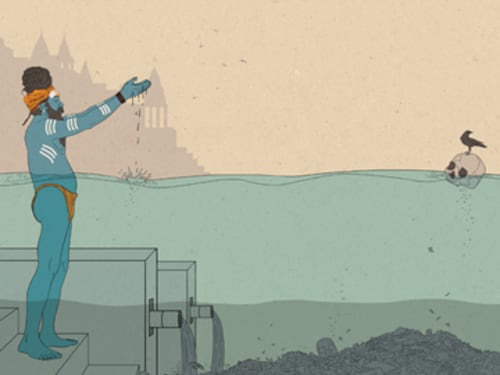

Why was it made a national symbol?
The Ganga is India’s longest river (2,525 km) and is considered the holiest of rivers by Hindus. It was declared a national river by Prime Minister Manmohan Singh in 2008 in order to achieve the objectives of the Ganga Action Plan, initiated by PM Rajiv Gandhi in 1985. The Plan, a clean-up operation, had focussed on municipal sewage. Under Singh’s tenure, the Ganga River Basin Authority was set up to broaden the clean-up operation, integrate pollution control, sustainable use of water and flood management.
Current Status
Sewage and industrial waste continue to plague the river. The most damaging industries are tanneries, sugar mills, distilleries, pulp and paper mills. Keeping pollution levels low is particularly difficult during summer. The Narendra Modi government has set up a committee to suggest ways to maintain uninterrupted flow for electric projects and ecological balance. Anil Joshi, founder and chairman of the Himalayan Environment Studies and Conservation Organisation, says, “The Ganga has religious and economic activities intrinsically linked with it. While the faith of devotees have not been affected by pollution, economic activity, like farming, have been hit.”
First Published: Aug 20, 2014, 06:37
Subscribe Now- Home /
- Independence-day-special /
- National-river-ganga